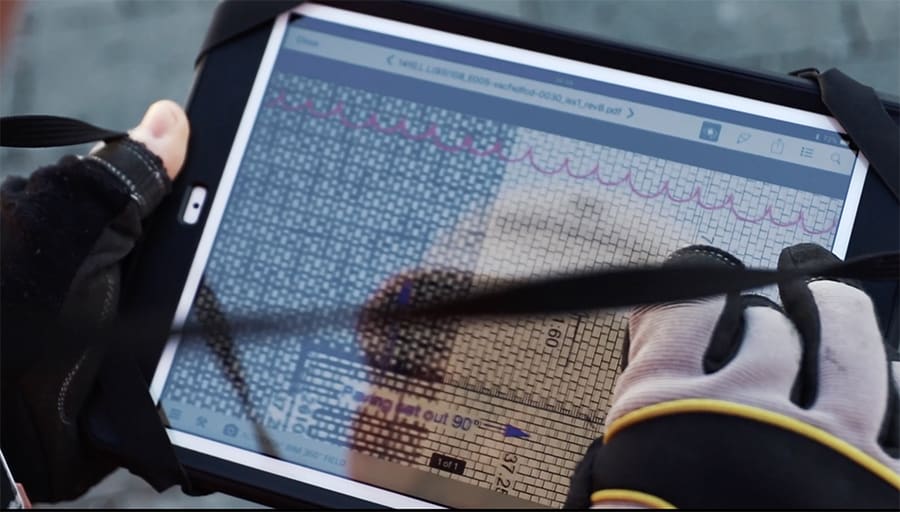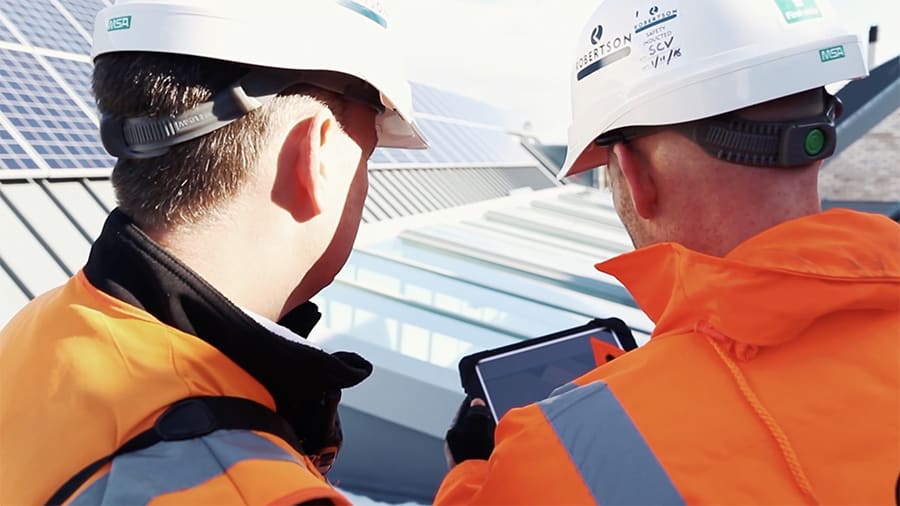- Client: Stirling Council, NHS Forth Valley, the Clackmannanshire and Stirling Integration Joint Board
- Lead Contractor: Robertson Construction
- BIM Tools: BIM 360
The Stirling Health & Care Village is the first project of its kind in Scotland to integrate healthcare and residential care in one facility. The new, accommodation will make it easier for healthcare professionals to work together to deliver a more joined-up approach to care in the community. Stephen Cousins reports.
The new Stirling Care Village is a £35m development between Stirling Council, NHS Forth Valley, the Clackmannanshire and Stirling Integration Joint Board and the Scottish Ambulance Service. It will bring together a wide range of health and social care services in a number of purpose-built new facilities.
With more than 100 beds, the Care Hub provides short-term care, assessment, and rehabilitation for patients needing additional support following an illness or operation. The facility also provides support for patients with dementia and those requiring palliative or end of life care.
The Primary and Urgent Care Centre is home to a number of health services including Minor Injuries, X-ray facilities, GP practices and out-of-hours services.
Delivered to schedule in autumn 2018, the project was built by Robertson, one of the UK’s largest family-owned construction, infrastructure, and support services businesses. Here’s how digital construction technology contributed to the project’s success and helped Robertson set new benchmarks and procedures for the future.
Mobile access to digital documents and drawings
Using BIM 360, Robertson made construction drawings and documents available via mobile devices to their teams on site.
Pav Pawlowski, site manager for Robertson, explains: “With BIM 360, we could access all project drawings and models on site, plus overmark and distribute them to our contractors. This avoided bringing multiple hardcopy drawings on site which was great.”
In addition, the technology’s 3D model capability takes the guesswork out of trying to visualise the exact design from a drawing.
“Having this kind of technology at our fingertips makes a real difference,” says Craig Smith, senior project manager at Robertson.
Being able to access 3D models on site as opposed to 2D drawings makes it easier for field workers to understand design expectations and speeds up detail interrogation. It also helps subcontractors and management visualise the end product.

Being able to access 3D models on site makes it easier for field workers to understand design expectations
QR codes used for tracking and QA/QC checks
QR codes were used for location and issues tracking, and QA/QC checks. Site operatives scan QR codes with their mobile devices, then BIM 360 automatically associates the QR code with the project location. The user pins the record for QA checklists and issues/snagging.
This provides unprecedented visibility and ease of access for client and managers, as well as independent testers.
“Being able to understand snagging issues instantly, plus having access to photos and drawings, has been a real benefit compared to the traditional worksheet,” says Smith. “It also makes it easier for our stakeholders to understand the issues and our approach to solving them.“
Because snagging is done in BIM 360, “by the time we get back to the office, it’s already in our subcontractor’s inbox”, says Smith, which means issues are addressed more efficiently. Furthermore, the whole supply chain is accountable and data from the system can later be used to identify which subcontractors a business is most likely to work with again.
Big picture advantage
During the project, site teams snap pictures with their mobile devices to record progress. Using BIM 360, the images can be reviewed by all stakeholders via their mobiles or web browser.
“The good thing about this system is that the client has access and it’s fully visible to the project team,” says Smith.
Digitally recording and interrogating labour information
Robertson used BIM 360 Daily Diaries to record labour information and streamline returns interrogation to report, identify and mitigate.

A picture speaks a thousand words. A collection of pictures can tell the entire construction story
“Having daily records of resources and activity on site is very useful on a day-to-day basis, as well as at the end of the project,” says Pawlowski.
Subcontractors can also use the information to demonstrate to the contractor how many hours they have worked throughout the project.
Faster, better, more detailed QA/QC
With BIM 360, site personnel could add QA/QC notes directly via their mobile devices and attach them to related sheets. This made it fast and easy to conduct QA/QC, and for stakeholders to receive and analyse the QA/QC reports.
Graphs and charts produced in the app also helped with snags and punch lists. Where there are issues over quality, the reports identify the source. This improves evaluation of subcontractors as well as the overall quality of the project.
“With BIM 360, we could access all project drawings and models on site, plus overmark and distribute them to our contractors. This avoided bringing multiple hardcopy drawings on site which was great,” says Pawlowski.
Simplified issue tracking
Using BIM 360, Robertson digitised its existing workflows and forms for the project. This allowed for more efficient defect management and snagging closures, as well as a smoother sign-off project handover.
“The snagging and quality control tool in BIM 360 is particularly useful. By scanning a barcode, we can access drawings, pinpoint snags and attach photos to help identify issues,” says Pawlowski.
How the company adopted new processes
Implementing new technology involves a learning curve, but more importantly, it requires a cultural shift in the way a company, and its partners, work. This is not something that happens overnight.
Robertson understood that for its investment in technology to be successful, it needed its teams on board. Robertson invested time in its people to ensure everyone understood the value and benefits, and how to adopt the technology it in their daily workflow. They were then able to easily deploy the technology and processes across the organisation.
Thanks to the smart approach and the ease of technology, according to Smith, staff immediately saw the time savings and new efficiencies in their processes. For example, the time saved on snagging and issues resolution alone was more than that spent training and adopting the technology.
“The feedback from our project teams and employees has been fantastic,” he says. “The new technology relieves the team of end-of-day admin work, while delivering thorough information to all relevant stakeholders instantly.”
Construction technology and benchmarking for the future
Beyond the technology, what’s most important about the Stirling Health & Care Village and other projects in Robertson’s portfolio is that processes have been established that ensure valuable project information is consistently recorded in one place. This critical first step allows them to collect project information for analysis and establish benchmarks.
Using BIM 360 on the Stirling Health & Care Village project provided an immediate return on investment for Robertson. Additionally, the technology allowed it to create benchmarks for future projects that will help it continue to improve its process.
The company has already identified a few areas for improvement, both in its own processes and in the technology:
- Using 3G or 4G-capable mobile devices to improve the speed and efficiency of communication;
- Improving the quality of the cameras on the mobile devices, to deliver better quality photos in low light conditions;
- Deploying a series of on-site and remote training sessions to ensure a joined-up business approach to consistent Robertson processes using BIM and accurately recording site records;
On project completion, Robertson was thrilled with the quality of the documentation and the smoothness of the handover process. With technology offering transparency throughout the process, there were no surprises for the client. Thanks to the high level and quality of documentation and document organisation in BIM 360, the client has access to everything they need to operate the facility effectively well into the future.
Elliot Robertson, chief operating officer at Robertson, concludes: “Our vision for Robertson is to utilise digital technology over the full project lifecycle: from design right the way through to on-site activities through to client handover and how projects can be delivered better for the ultimate users.
“As a company we have strengthened our digital capabilities and part of this is through the adoption and implementation of software such as BIM 360. BIM 360 helps provide our team with greater control and intelligence to support delivery through all aspects of a project. In turn BIM 360 also provides our customer with greater visibility of progress and helps support stronger communication and relationships.”











